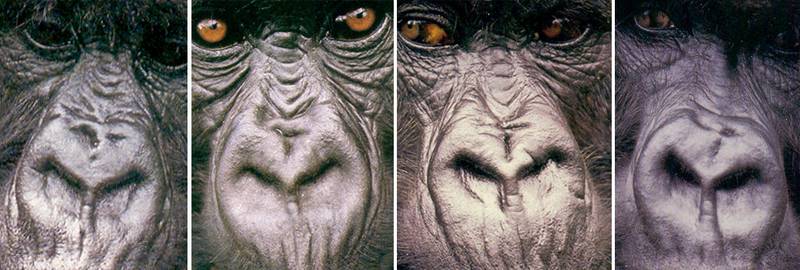How are gorillas studied?
The first scientist to study the behaviour of free-ranging gorillas was the American George Schaller. He observed the mountain gorillas in the Virunga Volcanoes for a total of 458 hours, approaching them slowly and carefully until they accepted his presence. This was only possible because the animals in that area had hardly been hunted before. If gorillas regard humans as enemies, they cannot be observed directly or only with a lot of patience.
To achieve results, fieldwork on gorilla behaviour needs to continue for years and even decades. Dian Fossey worked on the mountain gorillas in Rwanda from 1967-1985. It was her publications and films which introduced these apes to the general public. Since then, many scientists have worked at Karisoke, the research station founded by her.
In order to identify individual gorillas, Dian Fossey developed a card index of nose drawings, as the noses' shapes and folds characterise each animal, similarly to fingerprints in humans.

